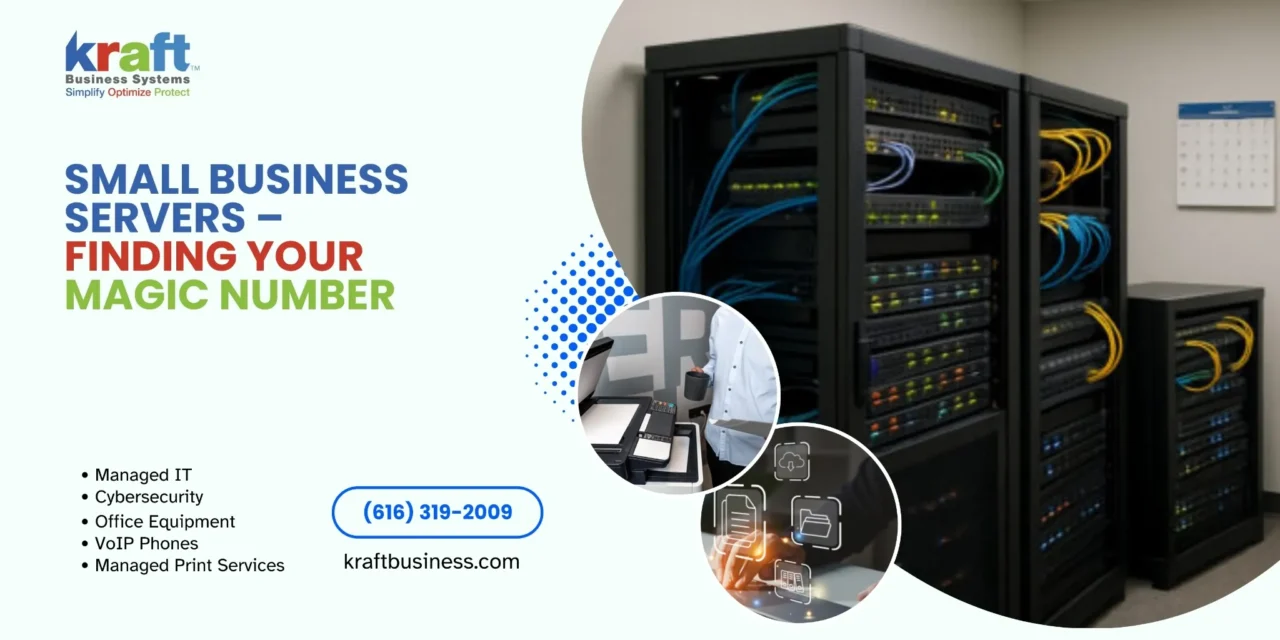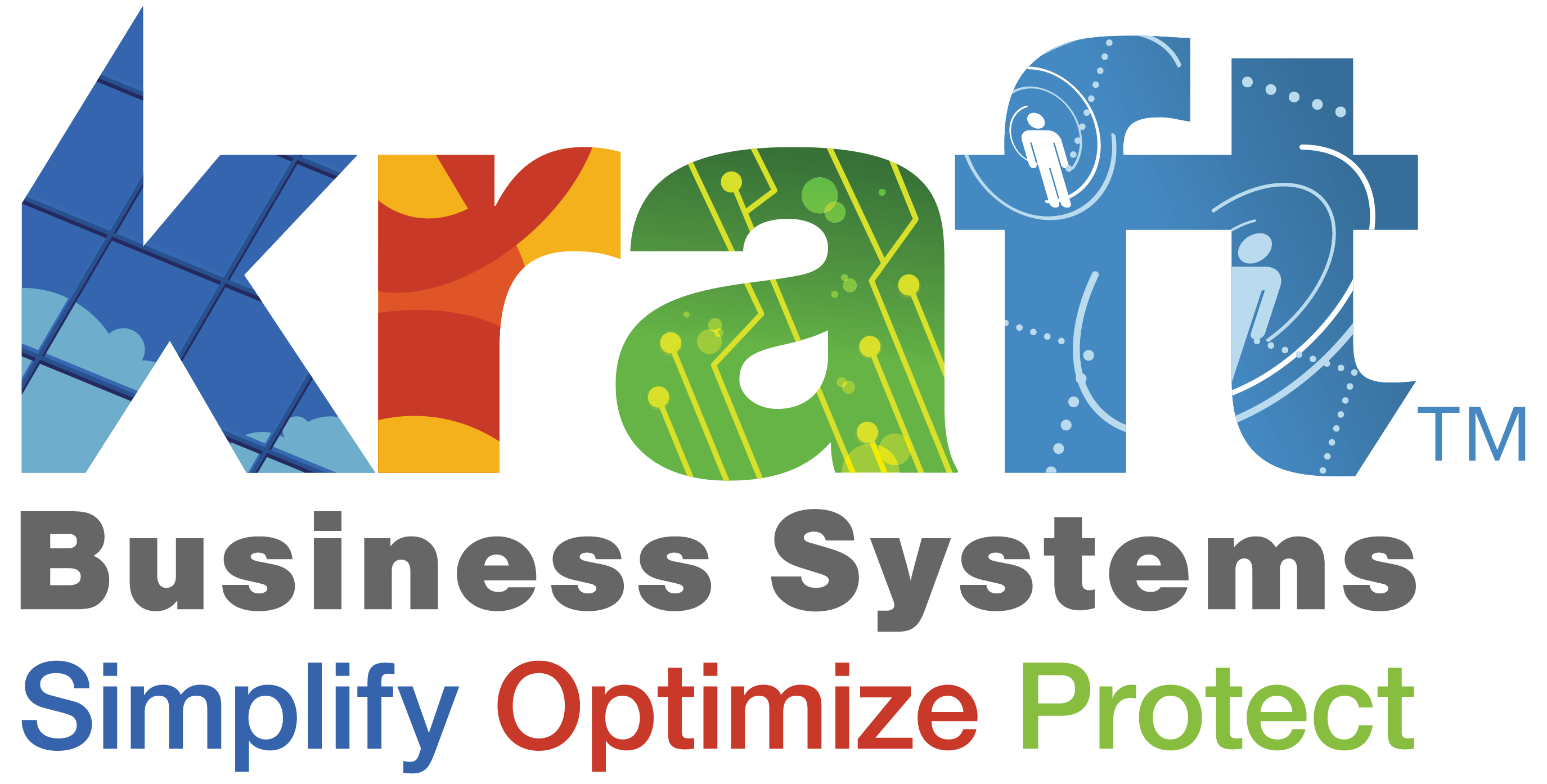So you’re wondering: how many servers does a small business need? If you’re like most small businesses with 15-50 employees, you’ll typically need just 1-2 physical servers. And here’s some good news – one well-configured server can often host 2-3 virtual machines handling different business functions. Let me break this down for you:
| Business Size | Typical Server Setup | Best For |
|---|---|---|
| 1-15 employees | 0-1 servers (or cloud-only) | Basic file sharing, email |
| 15-50 employees | 1-2 servers | File sharing, domain control, applications |
| 50+ employees | 2+ servers | High availability, specialized workloads |
Day when your team couldn’t access customer files because someone’s laptop crashed with the only copy? Or when email was down and nobody could reach clients? These growing pains signal it’s time to consider proper business servers that can transform your operations, security, and overall efficiency.
As server expert Scott Alan Miller puts it, “Every physical server should be virtualized, no exception.” This reflects modern best practices where even a single physical machine can multitask through virtualization. The old days of needing separate physical boxes for each business function are thankfully behind us.
A properly configured server can simultaneously handle domain control, file sharing, and run your business applications through virtual machines. For businesses that simply can’t afford downtime or handle sensitive client information, adding a second server provides that essential peace-of-mind redundancy.
Finding your perfect server count depends on several key factors that are unique to your business situation:
Your user count matters – A small accounting firm with 20 power users might need more server capacity than a 40-person warehouse with only occasional system access.
Application demands vary widely – Running simple file sharing requires fewer resources than hosting database-intensive applications or specialized industry software.
Compliance requirements can dictate architecture – Healthcare, financial services, and government contractors often face strict data handling regulations that influence server configurations.
Downtime tolerance is business-specific – Can you afford to be offline for an hour? A day? Your acceptable recovery time objectives should shape your server strategy.
Growth projections should influence today’s decisions – Planning for where you’ll be in 24-36 months prevents costly rip-and-replace scenarios.
When planning your server infrastructure, be careful not to overspend on unnecessary capacity, but also recognize that under-provisioning can be dangerously expensive. One lost major order due to server failure might cost more than that redundant hardware you decided to skip.

How to Calculate the Perfect Server Count for Your Small Business
Server 101: Roles Small Businesses Rely On
Before diving into how many servers your business needs, let’s understand what servers actually do for small businesses across Michigan, from Grand Rapids to Traverse City.
A server is essentially a computer designed to provide services to other computers (clients) on a network. Unlike regular desktop computers, servers are built for reliability, continuous operation, and handling multiple requests simultaneously.
For small businesses, servers typically handle several critical functions:
Typical On-Prem Server Roles
File Server: The most common role for small business servers is centralized file storage and sharing. This eliminates the need for lengthy email attachments and creates a single source of truth for documents.
“The days of lengthy email attachments are largely obsolete due to shared network drives,” notes a recent industry report. With a file server, employees can collaborate on documents in real-time, with proper version control and permissions.
Domain Controller: A domain controller manages user authentication, enforces security policies, and provides centralized user management. This is particularly important for creating and managing user accounts, enforcing password policies, controlling access to resources, and managing computers on the network.
Line-of-Business Applications: Many small businesses rely on specialized software that requires a server to function properly. Your accounting systems, customer relationship management (CRM) tools, enterprise resource planning (ERP) software, and industry-specific applications often need a dedicated server environment to run efficiently and securely.
Print Server: While less common now, print servers manage printing resources across the organization, allowing multiple users to share printers efficiently. This can be especially helpful for businesses with complex printing needs or multiple office locations.

Typical Cloud & SaaS Replacements
Many traditional server roles can now be fulfilled by cloud services, giving small businesses more flexibility:
Hosted Email: Services like Microsoft 365 have largely eliminated the need for on-premises email servers. A small manufacturing firm we work with in Grand Rapids made this switch last year and immediately saw benefits in reliability and reduced maintenance headaches.
Cloud Storage: Services like OneDrive, Google Drive, and Dropbox can replace basic file server functionality, though they may lack some advanced features. These solutions work wonderfully for teams that need to collaborate remotely or across multiple locations.
Platform as a Service (PaaS): Cloud platforms can host business applications without requiring on-premises servers. This approach lets you run powerful software without investing in hardware.
As one IT manager from a small law firm in Grand Rapids shared, “We migrated our email to Office 365, which eliminated our need for an on-prem Exchange server. This allowed us to drop to a single domain controller/file server VM setup, saving both hardware and licensing costs.”
The right combination of on-premises servers and cloud services depends on your unique business needs. Many of our clients at Kraft Business Systems find that a hybrid approach offers the best balance of control, security, and flexibility. You can learn more about setting up a Small Server for Office on our dedicated resource page.
How to Calculate the Perfect Server Count for Your Small Business
How Many Servers Does a Small Business Need?
Now to the central question: how many servers does a small business need? While every business has unique requirements, we’ve noticed clear patterns from our years serving businesses throughout Michigan.
For most small businesses with 15-50 employees, 1-2 physical servers typically handle all necessary workloads. One physical server can often run 2-3 virtual machines for different functions, maximizing hardware efficiency while keeping costs in check.

Let’s break down the typical scenarios we see:
Zero Servers has become increasingly common for very small businesses with 1-10 employees. These companies often operate entirely in the cloud using SaaS applications and cloud storage solutions.
One Server works well for many small businesses with 10-30 employees. This server typically runs virtualization software hosting 2-3 VMs: one handling domain controller functions, another managing file sharing and basic applications, and possibly a third for specialized business applications.
Two Servers makes sense for businesses with 30-50 employees or those with higher availability requirements. The second server provides crucial redundancy if one fails, allows for better load balancing, and enables more robust disaster recovery options.
Three or More Servers typically become necessary for larger small businesses (50+ employees) or those with specialized requirements like resource-intensive applications, separate development environments, or improved redundancy needs.
As one IT consultant we work with often says, “Over 80% of small businesses that require a physical server should have only one server, with Windows licensing allowing for two VMs—one for Active Directory, one for other roles.”
Calculating how many servers does a small business need (Step-by-Step)
To figure out your specific server needs, we recommend this practical approach:
- Measure user activity and transactions
Count your total employees, estimate concurrent users during peak times, and identify any seasonal or monthly transaction spikes that might strain resources. - Estimate resource requirements
For CPU, most small business workloads need 4-8 cores per server. RAM planning should include 4GB base plus 1-2GB per user for standard workloads. Storage calculations should cover the OS (about 100GB), applications (varies widely), and data (current needs multiplied by 1.5 for growth). Always add 30% overhead for future expansion. - Consider redundancy needs
If your systems are critical, plan for at least N+1 redundancy. Determine how much downtime your business can tolerate and how much data loss would be acceptable in a worst-case scenario. Don’t forget to add capacity for backups—typically 2-3 times your data size. - Calculate total requirements
Add up all resource needs and divide by the capacity of a typical server to determine your magic number.
For example, a 30-person accounting firm in Grand Rapids might need about 10-12 cores, 62GB of RAM, and 3.4TB of storage. This could be handled by either one robust server or two moderate servers in a redundant configuration, depending on how much downtime the firm can tolerate.
When growth re-asks “how many servers does a small business need”
As your business grows, you’ll inevitably need to reassess your server infrastructure. Watch for these key triggers:
Headcount Increases often require server upgrades when you add significant staff (typically 25%+ growth). More users mean more resource demands and potentially new workloads.
Transaction Volume Spikes can strain existing resources. We see this frequently with seasonal businesses across Michigan that experience dramatic increases during peak periods.
New Applications with heavy resource requirements might necessitate additional server capacity or dedicated resources.
Performance Issues like slow response times, frequent crashes, or other problems usually indicate overloaded servers that need upgrading or expansion.
One of our manufacturing clients in Sterling Heights shared: “We started with a single server when we had 20 employees. As we grew to 45 employees and added an ERP system, we needed to add a second server to maintain performance and provide redundancy.”
The right server setup grows with your business, and finding that sweet spot between too little capacity (risking downtime) and too much (wasting resources) is where having experienced IT partners makes all the difference.
How to Calculate the Perfect Server Count for Your Small Business
7 Factors to Pinpoint Your Magic Number & Choose Architecture
Finding your server “magic number” isn’t about guesswork – it’s about understanding your unique business needs. Let’s walk through the key factors that will help you make the right choice for your Michigan business.

1. Employee Count and User Load
Your headcount directly impacts what server setup makes sense. We’ve seen this pattern play out consistently across Michigan businesses:
1-15 employees can typically thrive with cloud services or a single server. At this size, your needs are straightforward enough that keeping things simple usually works best.
15-50 employees generally need 1-2 servers to handle the increased load and provide some redundancy. This is the sweet spot where most small businesses land.
50+ employees usually require 2+ servers to maintain performance and provide proper failover protection.
Remember though – it’s not just about total employees. A manufacturing company with 50 workers might only have 30 accessing systems simultaneously. Your actual concurrent user count matters more than your total headcount.
2. Application Complexity and Resource Demands
Not all business applications are created equal:
Basic file sharing and email won’t strain your servers much. A small accounting firm in Holland told us their basic file sharing barely used 20% of their server’s resources.
Database applications like CRMs and ERPs get hungrier. They need more CPU power and RAM to stay responsive, especially with multiple users.
Media processing or engineering software can be extremely demanding. One architectural firm in Kalamazoo needed a dedicated server just for their 3D rendering work.
3. Compliance Requirements
Industry regulations often dictate specific server setups:
Healthcare providers following HIPAA regulations may need separate servers to properly isolate patient data. A dental practice in Ann Arbor implemented this approach to protect patient records.
Businesses processing payments must follow PCI DSS requirements, which can influence server architecture decisions.
Industry-specific regulations might mandate certain data handling practices that affect your server needs.
4. Uptime Requirements and SLAs
How much downtime can your business tolerate? This single question shapes many server decisions:
99% uptime (about 87 hours of downtime yearly) might work for non-critical systems.
99.9% uptime (under 9 hours yearly) is standard for most business applications.
99.99% uptime (under 1 hour yearly) requires serious redundancy for critical operations.
A small manufacturing company in Flint learned this lesson the hard way when a server failure cost them a full production day – far more expensive than the redundant server they now have.
5. High Availability and Disaster Recovery Needs
Your recovery goals directly influence server architecture:
Recovery Time Objective (RTO) – how quickly you need systems back online after a failure.
Recovery Point Objective (RPO) – how much data loss you can tolerate.
Tighter RTOs and RPOs typically require more sophisticated server setups with proper redundancy. As one law firm in Grand Rapids shared: “Our billing system downtime costs us roughly $1,000 per hour – that math made our server decision easy.”
6. Virtualization Capabilities
Modern virtualization is a game-changer for small businesses:
Windows Server Standard licensing includes rights for two VMs on a single physical server – a huge value for small businesses.
A single robust server can often comfortably host 3-5 VMs for typical small business workloads.
Better resource utilization means you can do more with less hardware, often reducing the number of physical servers needed.
7. Budget Constraints
Let’s be realistic – budget shapes every IT decision:
Initial hardware costs for quality business-class servers typically start around a few thousand dollars.
Ongoing expenses include maintenance, support, licensing, energy, and eventual replacement.
ROI calculations should factor in productivity gains and potential downtime costs.
Risk vs Cost Balance
Finding your server sweet spot means balancing risk against cost:
Downtime costs go far beyond the obvious – lost revenue, customer frustration, employee idle time, and damaged reputation all add up quickly.
Hardware investments should be viewed against potential losses. A retail business in Traverse City calculated that even a few hours of system downtime during peak season would cost more than their entire server infrastructure.
ROI thinking helps make better decisions. When that email outage cost a Grand Rapids business a $75,000 order, the math for redundant systems became crystal clear.
Physical, Virtual, Cloud, Hybrid
Today’s small businesses have several deployment options:
Tower servers work well for small offices with minimal IT infrastructure needs. They’re quieter and don’t require special racks.
Rack servers offer better scalability for growing businesses with dedicated server rooms.
Virtual infrastructure – running multiple VMs on physical hosts – gives you flexibility and better resource utilization.
Cloud solutions (IaaS, PaaS, and SaaS) eliminate hardware management but may have higher long-term costs.
Hybrid approaches often provide the best balance. A manufacturing company in Wyoming, MI keeps their production systems on-premises for performance while using cloud services for email and collaboration.
High Availability & Disaster Recovery Essentials
For businesses that can’t afford downtime, proper recovery planning is non-negotiable:
VM replication between hosts ensures quick recovery if one server fails. Even small businesses can implement this with Hyper-V or VMware.
Comprehensive backup strategy should include both on-site backups for quick recovery and off-site backups for disaster protection. Learn more about effective Small Business Data Protection approaches.
Off-site recovery options provide protection against site-wide disasters like fires or floods. Cloud-based disaster recovery services have made this more affordable for small businesses.
Many small businesses find that Managed IT Services for Small Businesses can help implement proper server architecture without needing in-house expertise. With the right planning, even businesses with modest budgets can implement reliable Data Backup and Recovery Solutions that protect their operations.
How to Calculate the Perfect Server Count for Your Small Business
Frequently Asked Questions about Small Business Servers
Do all small businesses need an on-prem server?
The short answer is no! Many small businesses today thrive without any on-premises servers. If you’re running a business with just a handful of employees (typically 1-10), you might do perfectly well with a combination of cloud services and SaaS applications.
The “cloud-first” approach has become increasingly popular, especially among startups looking to minimize upfront costs. With tools like Microsoft 365, Google Workspace, and various cloud storage options, many basic business functions can be handled without a server in your closet.
That said, on-premises servers still make sense in several scenarios. If your internet connection isn’t rock-solid reliable (a concern for some businesses in rural Michigan), cloud-only might be risky. Some specialized applications simply don’t have good cloud equivalents yet. And certain industries have compliance requirements that make local data storage necessary.
On-premises servers typically make more sense when:
- You need guaranteed access to systems regardless of internet status
- Your applications require low-latency access to data
- Data sovereignty or compliance requirements mandate local storage
- The performance you need would cost more in the cloud than on your own hardware
As one of our clients in Grand Rapids put it: “We tried going all-cloud but found our CAD software performed much better on a local server. The compromise was keeping that on-premises while moving email and file sharing to the cloud.”
Is one multifunction server enough or should roles be separated?
For most small businesses, one physical server running multiple virtual machines strikes the perfect balance between cost and performance. Virtualization has been a game-changer, allowing businesses to divide a single powerful machine into several purpose-specific virtual servers.
Consolidation brings several benefits: lower hardware costs, reduced energy consumption, simpler backup procedures, and better overall resource utilization. With Windows Server Standard licensing including rights for two VMs, many businesses can handle their core needs without additional licensing costs.
However, there are good reasons to separate certain server roles. Security-sensitive functions might warrant isolation, especially in regulated industries. Resource-hungry applications can sometimes “starve” other services when sharing hardware. And as one IT professional bluntly noted: “WSUS should never share hardware with a domain controller due to complexity and potential failures.”
The beauty of virtualization is that you can start with one physical server hosting multiple VMs, then migrate those VMs to additional hardware as needs grow. This provides a smooth upgrade path without requiring complete system redesigns.
When should we upgrade from one server to several or to the cloud?
Knowing when to expand your server infrastructure is partly science and partly listening to your users. Here are some clear indicators it’s time for an upgrade:
Your business is experiencing significant growth. When your employee count jumps by 25% or more, your existing infrastructure may start feeling the strain. Similarly, when storage utilization exceeds 70% capacity, or CPU/memory consistently runs above 70% utilization, performance will likely suffer.
Compliance requirements change. New regulations might require separating certain data types or adding redundancy that wasn’t previously necessary. Post-audit recommendations often highlight infrastructure weaknesses that need addressing.
Users are complaining. This is perhaps the most telling sign! When staff members report slow system responses, frequent application crashes, or batch processes taking too long, it’s time to investigate upgrades.
A retail business owner in Detroit shared this experience: “When our point-of-sale system started lagging during holiday shopping periods, we knew it was time to add a second server dedicated to that function. The cost of the server was nothing compared to the potential lost sales from frustrated customers.”

Sometimes the right move isn’t adding more on-premises servers but shifting workloads to the cloud. This hybrid approach often provides the best balance, keeping performance-sensitive applications local while moving suitable workloads to scalable cloud platforms.
Server planning isn’t just about today’s needs—it’s about where your business will be in 3-5 years. A thoughtful approach now can save significant headaches and unexpected expenses down the road.
How to Calculate the Perfect Server Count for Your Small Business
Conclusion
Determining how many servers does a small business need isn’t as simple as checking a chart. Your answer depends on your specific business needs, growth plans, and how much downtime you can tolerate.
For most small businesses across Michigan with 15-50 employees, one physical server running 2-3 virtual machines strikes the perfect balance. This approach gives you solid performance and reliability without breaking the bank.
Think of your server infrastructure like a good foundation for a house – it needs to support what you’re building today while allowing for tomorrow’s additions. As your business grows, you might need to add more servers for increased workloads or better redundancy. Or perhaps you’ll move some functions to the cloud while keeping critical applications in-house.
What matters most is creating a flexible strategy that grows with your business. Start with what you need right now, but always keep one eye on the future. After all, the goal isn’t having the most servers – it’s having the right server setup that supports your business efficiently and reliably.
Small businesses throughout Michigan face unique technology challenges. From manufacturing firms in Sterling Heights to professional services in Grand Rapids, each company needs a customized approach to their server infrastructure. The right setup protects your data, enables collaboration, and keeps you competitive in today’s marketplace.
At Kraft Business Systems, we’ve helped hundreds of Michigan businesses find their server “sweet spot.” Our team understands that technology should solve problems, not create them. Whether you need help assessing your current needs or planning for future growth, our IT Solutions from Kraft can help you build the right foundation for your business success.
The best server solution isn’t about following trends – it’s about finding what works for your unique business needs.






